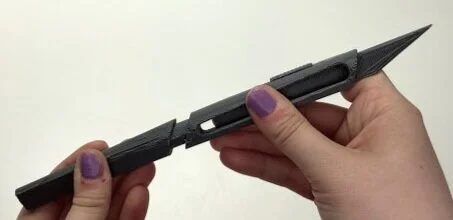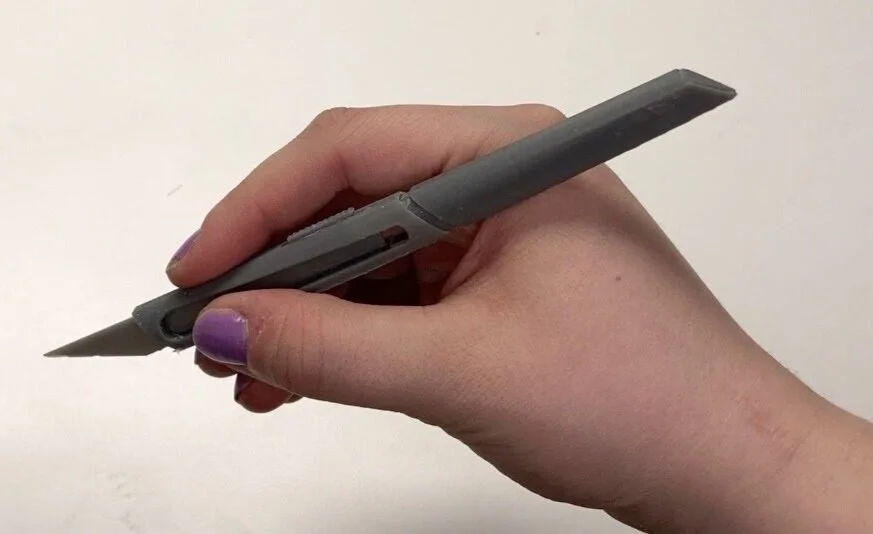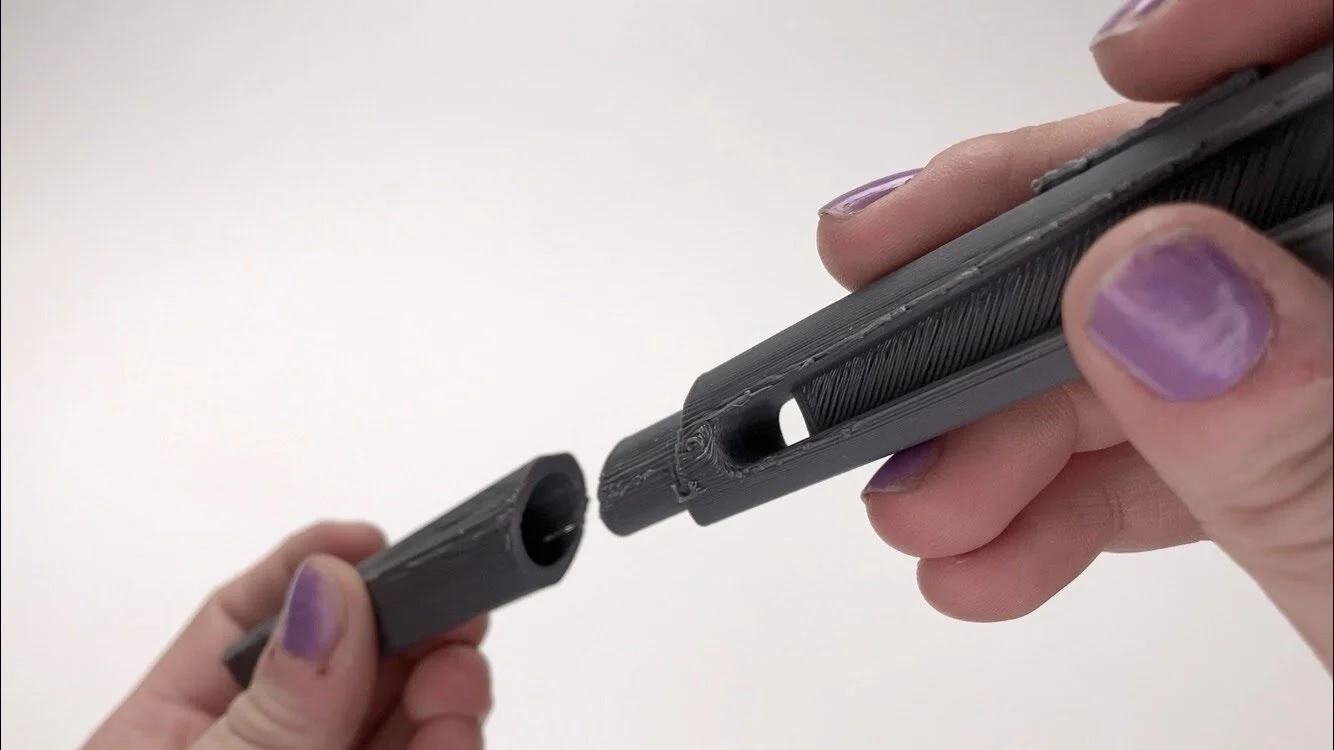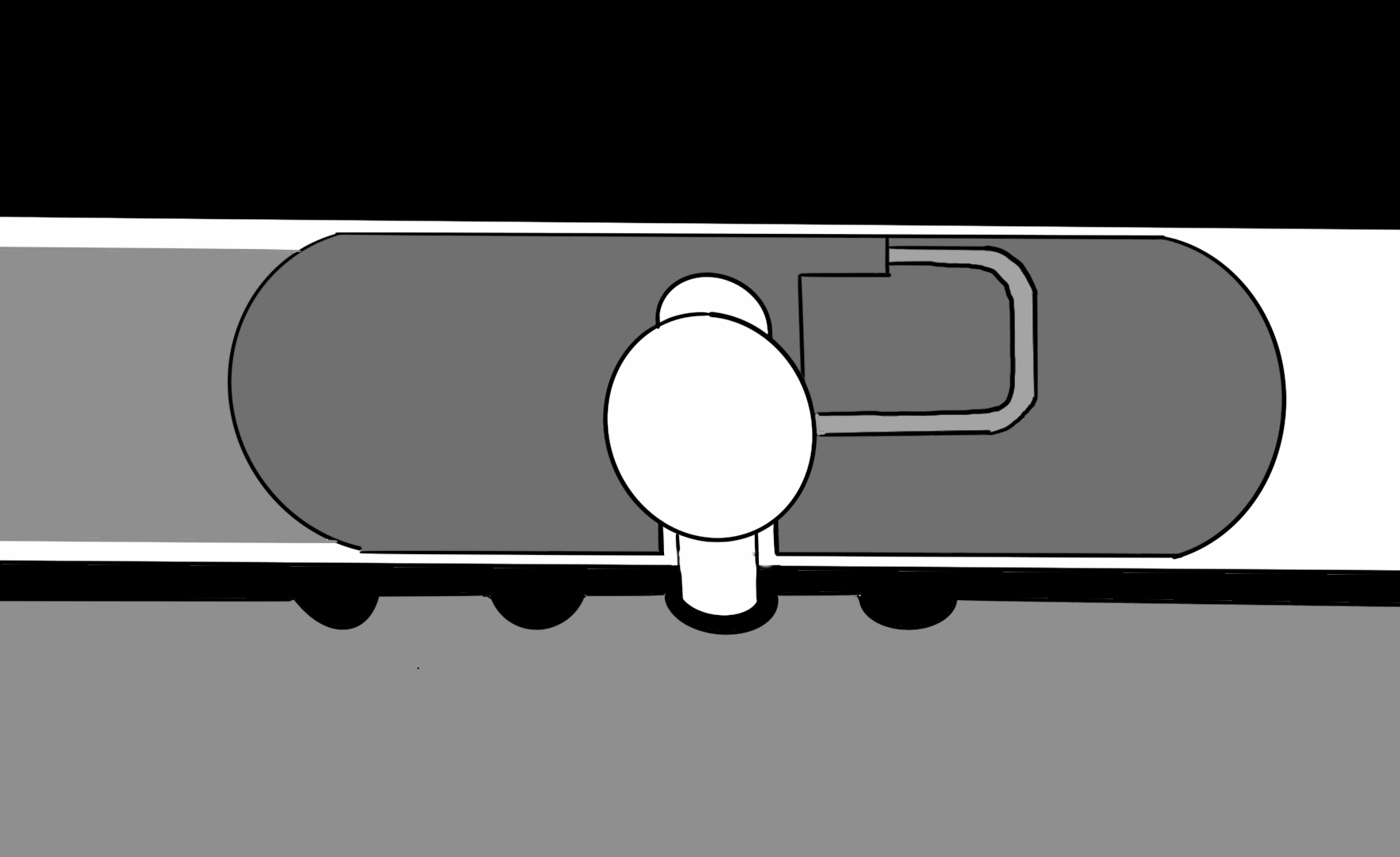
Renew
A sustainable alternative to disposable blades
Objective: Create a more sustainable utility knife
Surveys
70%
of Designers prefer an X-acto knife
30%
of Designers forget to replace the blades
Edge Maintenance
Investigating ways that already exist that help consumers maintain a sharp edge quickly and easily
Ideation
Concept 1: Attached Sharpener
Concept 2: Clickable Blade
Rudimentary prototypes were made during ideation to figure out sizing and ergonomic factors.
A combination of 3D printed parts and regular pen parts. This helped achieve the recognizable “click” .
Mechanism
The classic utility knife button is difficult to make because it is too small.
SLA and FDM attempts to print the mechanism failed due to small size. There was no way for me to make these parts with the resources at hand.
New Slider
The Christy Knife has a sliding mechanism that utilizes a similar open gap in the middle
The patent is now public domain
This was chosen as the new mechanism
Slider CAD
Final Prototyping
I made my own version of the Christy sliding mechanism, and while it is still too small to feasibly work as SLA parts, it provides a good demonstration of what the product’s intentions are.
A hacksaw blade was ground down into a long X-acto blade that would fit into the knife. This unique longer blade can be continually sharpened.

Features and Rationale
Longer sharpen-able blade: Sustainable, replace less blades, sharpens like a Japanese blade
Electroplated diamond stones: Durable, lasts a long time
Angled design, thin blade : Allows user to have a high level of control over their craft
Familiar Mechanisms: Easy, No high level of skill needed to use
Blade Protection: Both the user and the blade are protected when not in use




























